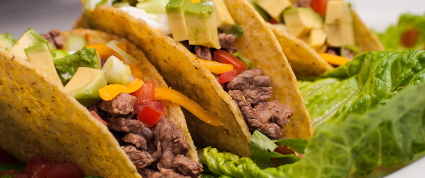
People living with celiac disease have avoided gluten for many years; this intense sensitivity to gluten, a substance found in wheat products, can be very dangerous if ingested. While this disease is rare, many people are starting to see that a diet without gluten makes them have better digestion, feel more energetic, and feel healthier overall. Keep in mind that family and friends may not understand why it is worth it to give up bread, baked goods, and regular pasta, but if you are patient and clear with them, they’ll be excited that you’ve found a path that is healthy and positive for you.
If you are starting the process of cutting down or cutting out gluten, consider these suggestions for finding your way in a gluten-free diet.
Reading Labels

As you start to get to know which foods are gluten free and which aren’t, it’s important to read the label on any packaged food; after all, gluten isn’t a required labeled allergen, like eggs, soy, or nuts. However, you can be skeptical of a food if it includes any of the following:
Wheat
Barley
Rye
Malt
Brewer’s yeast
Oats (can be gluten-free, but frequently aren’t)
While there are many options these days in the “gluten-free” section, it’s better to start getting excited about fruits, veggies, meats, and gluten-free grains like rice. The more you can prepare at home (even if you prepare it in a slow cooker in large quantities to freeze for convenience), the easier it is to keep gluten out of your diet.
Look for the “GF” and Ask for Gluten-Free Options at Restaurants
At many restaurants, it is becoming common to put a tiny “GF” next to items that are prepared without any wheat flour. Keep your eyes peeled for these signs; they are a chance to order something off the regular menu! If you don’t see the little symbols, however, many restaurants are now preparing a separate gluten-free menu or can point out which items can be prepared without gluten. Most restaurants are happy to accommodate, so there is no need to be shy.
Consider Your Symptoms in the Case of Special Occasions
If you have a very violent reaction to gluten, you want to avoid it at all costs, but for gluten sensitivities, there are varying degrees of strictness. Consider whether there are certain foods or certain occasions when you are willing to give in to the gluten. It may be worth it to establish a hard line, especially with close family who may question why you eat gluten sometimes but not others. However, if you are with people you don’t frequently see and you want to taste a tiny sample of something with wheat in it, that’s not the end of the world. Very small amounts of gluten sometimes don’t trouble even those with gluten sensitivity.
What to “Pack” for Parties and Dinners
No one likes to go to a dinner or party and ask for exacting preparations or different food. Obviously, if you know a friend well and can tell them early enough, it’s worthwhile to mention your gluten allergy or sensitivity. However, if you arrive and realize that most of the items available are actually gluten-packed, it’s worth having an emergency stash. Your favorite gluten-free energy bar (bars made of dates, nuts, and egg whites can be great for this) is your best friend in this case. It is usually pretty easy to load up on salad and eat an energy bar on the sly at some point; yes, it’s more fun to try everything on the table, but some sneaky eating on the sly is worth it to save your host’s feelings and keep your tummy from rumbling.

Consult with a Registered Dietician for Tips
Certainly, there are many healthy ways to eat a gluten-free diet, but there are some ways that aren’t so healthy, if you aren’t a big fan of the food groups that are still available to you. A dietician can talk to you about your likes and dislikes and help you to find things you enjoy and substitutes; if you love a good creamy sauce with flour in it, consider how a slosh of olive oil might make your food equally delicious. Dieticians aren’t there to convince you to be or not be gluten-free, but rather to help you make decisions that give you access to all the nutrients you need even if you used to get them from grains that contain gluten.
With these tips, you can start the process of going fully gluten-free while acknowledging that for many people, this is a big change. Explain how much happier and healthier you feel without gluten, and many people will be excited and supportive of your choice. More importantly, you will be eating intentionally to get your nutrients, which is a great health choice no matter what level of sensitivity you may experience.
